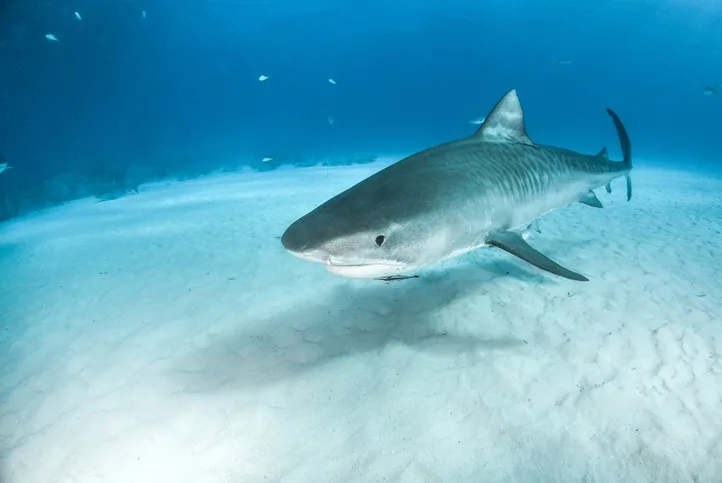
Scientists may have solved mystery of why some sharks bite humans
According to the new research, white, bull and tiger sharks account for the most bites on humans.
The long-believed theory of why some sharks bite humans may actually ring true after all.
New research from Australia's Macquarie University has indicated that numerous shark bites by great whites could be a case of mistaken identity because of how close surfers, paddle boarders and swimmers on the ocean’s surface resemble seals and sea lions.
According to the research, white, bull and tiger sharks account for -- by a large margin -- the most bites on humans.
SEE ALSO: Why more great white sharks are showing up in Atlantic Canada
“We found that surfers, swimmers and pinnipeds (seals and sea lions) on the surface of the ocean will look the same to a white shark looking up from below, because these sharks can’t see fine details or colours,” said lead author Laura Ryan, a postdoctoral researcher in animal sensory systems at Macquarie University’s Neurobiology Lab, in a press release.
"Surfers are the highest-risk group for fatal shark bites, especially by juvenile white sharks."

Ryan, an avid surfer, stated the study will help scientists gain a better understanding of what provokes certain sharks to bite humans.
The findings have prompted scientists at the Neurobiology Lab to develop non-invasive, vision-based devices as possible protectionary tools for surfers and swimmers from shark bites.
The latest study, published in the Journal of the Royal Society Interface, was a hands-on experiment developed on years of work by the researchers to understand how sharks see -- by investigating the neuroscience of white sharks’ visual systems, Ryan said.
RESEARCHERS COMPARED VIDEO FOOTAGE
The team involved in the study did a comparison of underwater video of rectangular floats, seals and sea lions swimming, humans swimming in different patterns, and humans paddling on surfboards of distinct sizes in a sizable aquarium at Taronga Zoo. This included cameras that were motionless and travelling, directed at the water surface.
“We attached a GoPro to an underwater scooter, and set it to travel at a typical cruising speed for predatory sharks,” says Ryan.

(Getty Images)
At the lab, the group relied on substantial shark neuroscience data to apply filters to the video footage, then establishing modelling programs to simulate how a juvenile white shark would interpret the movements and shapes of different objects.
To a juvenile white shark, humans swimming and paddling on surfboards bear striking similarities to seals and sea lions, the results showed. Because smaller surfboards were harder to differentiate from pinnipeds, they could present a more tempting prey than longboards or standup paddleboards to white sharks, who normally target smaller, young pinniped pups.
RISK OF SHARK BITES IS VERY LOW
Although the chances of a shark bite is very low, Australia remains one of the countries where one most often occurs -- registering six of the world’s 10 recorded unprovoked fatal shark encounters in 2020.
The occurrences of sharks biting humans has jumped in the past 20 years, and according to Ryan, surfers may have an elevated risk because they spend "far more time" in the ocean than swimmers, also frequently in deeper water.
“Sharks use a range of sensory cues to distinguish between different objects and zero in on their food, and these differ in sensitivity between shark species,” Ryan said.
People's fear of sharks, even with the low chance of bites, has led to preventive methods such as shark nets and drumlines, which further threaten marine life, according to the university.
“Understanding why shark bites occur can help us find ways to prevent them, while keeping both humans and sharks safer,” says Ryan.
Thumbnail courtesy of Sharkdiver68/Wikipedia.
Follow Nathan Howes on Twitter.










